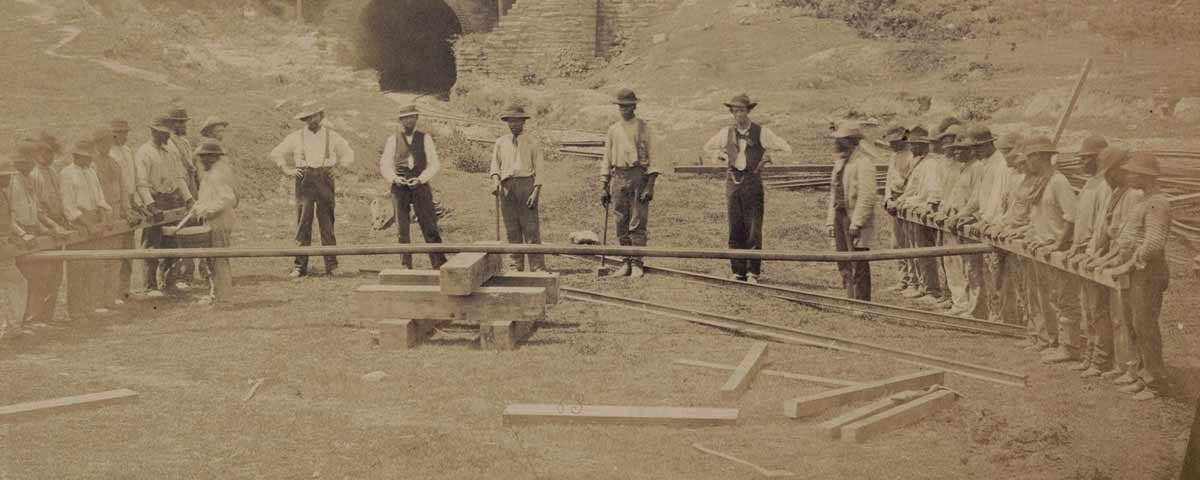
Mark Lause, Labor Historian at the University of Cincinnati, published, Free Labor: The Civil War and the Making of an American Working Class in 2015. The title plays off the magisterial work by English historian E.P. Thompson: The Making of the English Working Class. Lause presents a complex tapestry of what happened to labor unions and strikers throughout the country during the Civil War.
CWT: What did unions and the labor movement look like before the war?
ML: You have small craft unions going almost back to the Revolution. You get the first labor party in the U.S. in the 1820s. But these are episodic things. In an economic downturn, the first response in the 19th century is to pick up and move. Or you move on to another city where there is more employment. There is a tremendous amount of labor mobility and it destroys any kind of labor organization.
CWT: What happens when war is declared?
ML: Many existing unions almost dissolved when the war gets underway, and by 1862 a lot of the people who were active in unions are gone off to the war. On the other hand you have radical expansion of the work force because of the war economy.
CWT: What was the government’s reaction to wartime strikes?
ML: The oddest thing about the Civil War is different rules apply the farther west you go. If you are far away from what’s going on in Washington, as Rosecrans was in St. Louis, and he says all strikes are a blow against contractors and employers and the army has to act against them. But in the East, Navy Yard strikers are sending delegations to meet with Lincoln. Employers are saying workers are on strike, and we can’t meet the deadline on these contracts, so the government has to give us an extension. Lincoln’s position was you don’t get the extension: We’re neutral in these things. That is a more pro-labor position from anyone else who had ever been in the White House.
CWT: What can you tell me about the New York City Draft Riots?
ML: From the 1830s on it becomes a very common practice for the Democratic Party to make racial appeals and stir up racial tensions before elections to make sure that you are mobilizing ethnic voters. I’m in Cincinnati, one of the cities that started this in 1829-30, and the riots would be provoked by the gentlemen of property and standing—the mayor, the judges, members of the state legislature, the city council, and so on. It’s said that the New York City Draft Riots simply represented an extension of that.
CWT: What happens during the New York City riots?
ML: There are protests about the class nature of conscription—the idea that some can afford to pay $300 for a substitute to go to war for them. The Draft Riots are also a response to rumors that runaway slaves are going to be imported to New York to displace dockworkers. This is an issue that is appearing in the press quite a bit; there are meetings about it. When the Draft Riots take place, there are lots of indications that most of the people, or thousands of the people, out in the streets are basically just like people watching a car wreck on the highway. The workers’ organization disassociated themselves from it very quickly.
CWT: Were there plans to bring in freed slaves?
ML: Employers were definitely using the threat of displacement, but there is no evidence that it was ever seriously contemplated. But Democrats traditionally mobilized ethnic voters in New York using this fear of—I am tempted to say “illegal aliens” for the similarities to contemporary fears.
CWT: Was anyone trying to organize the newly freed black slaves?
ML: When Richmond falls in 1865, the first real infantry into the city was a black unit. There were complaints that once these troops got into Richmond they were actually explaining to emancipated slaves how you go about negotiating wages and so on. And there were complaints and petitions that went into Washington very quickly in May 1865, that you had to get these people out of Richmond.
[quote style=”boxed” float=”right”]By 1863, you have a tri-racial Union division[/quote] CWT: You mean there could have been a plan for shifting the economy.
ML: Here are some people who actually have a notion of how to make the transition from slavery to freedom, but those particular black soldiers ended up getting sent down to the Rio Grande Valley. That’s why it seems in hindsight that Reconstruction starts falling apart very quickly. You can certainly see that it’s going to be a conflict between the Johnson administration and Congress.
CWT: Tell me about the slave strikes.
ML: W.E.B. DuBois said that the end of slavery came about because of the mass rolling strike of slaves in the South. Some labor historians have sometimes balked at this, because those workers don’t have recognition of the AFL-CIO or have dues cards? But these were workers who were engaged in mass work stoppages, and they essentially played a decisive role in terms of the war. The Confederacy didn’t just lose territory. It lost population, it lost an ability to have a work force and everything that it lost ended up getting turned against it.
CWT: It wasn’t just the slaves?
ML: When the Confederacy occupied Union territory and announced mass conscription of military age men in those areas, they created the kind of unity in the Indian country that basically destroyed them. By 1863 you have a tri-racial Union division of the Army of the Frontier. Blacks, Indians and Southern whites fighting against the Confederates in places like Honey Springs. That was an army led by people who had followed John Brown in the 1850s. Really interesting in terms of what Reconstruction could have been out there.
CWT: Were workers better off after the war?
ML: Slaves gain their freedom, but ultimately little more than that. But the conditions of the workforce in general are probably worse immediately after the war. You had a lot of labor struggles, you had different ways that people responded to that. I argue at the end of the book that the ethnic stratification of the workforce really generated different kinds of responses. You have the traditional craft union response: Set up a strike go on a picket line. Sit down and have negotiations. But industrial workers were not in a position to do that—what they do is usually described in newspapers as riots. This is usually associated with ethnic groups like the Irish. That’s one mode. The other mode is the African-American general strike. Where riots pop up after the war, they are almost always crushed. Ultimately, you can’t funnel a class response through so-called respectable craft unionism.
CWT: Conflict over labor started the war, and blacks get little but freedom. What else happened?
ML: You have to think about the potential that comes out of it. Class doesn’t have any meaning unless it is something that people sense and understand and act on. Even though American laborers are talking about the working class all the way back to the 1800s, to actually get them to understand and act on it, you’re going to have to get rid of slavery. There are a series of postwar labor struggles where you see blacks and whites stick up for each other. That would have never been possible without the achievements and changes brought on by the Civil War. ✯
Interview conducted by Senior Editor Sarah Richardson.





